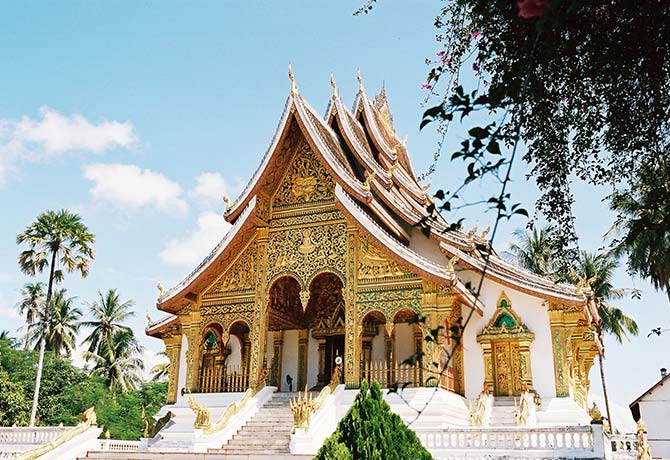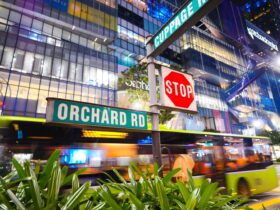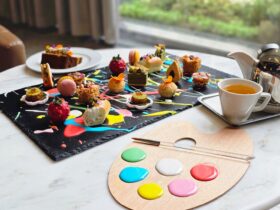
Slow down and let the Laotian city surprise you with its mix of cultural sights and unexpected adventures
Kneeling in reverence with heads bowed respectfully, we dug our hands into bamboo containers and started offering morsels of sticky rice to the procession of monks who were quickly passing us by.
“Don’t touch the alms bowl. It’s okay if you miss a monk or two,” the words of my Lao guide reverberated in my head as moving saffron robes became a blur before me.
The sheer amount of concentration required for this tradition of Buddhist almsgiving, coupled with the discipline to not flinch even as the piping hot rice burnt my fingers, was an eye-opener for an urbanite like me.
But for the people of Luang Prabang, this ritual takes place daily at sunrise and reflects the sacredness accorded to Buddhism by the city.
Aptly, the name of this former Lao capital also translates literally to “royal Buddha image”.
Undiscovered Cultural Gems

Often overlooked by travellers in favour of its bustling Thai neighbours, Laos has a quiet charm that is all of its own.
Luang Prabang, in particular, lies between the Mekong and Nam Khan rivers, and offers plenty in terms of culture, food and scenic value.
In fact, the town of Luang Prabang is a UNESCO World Heritage site, prized for its seamless mix of traditional architecture and urban structures.
The Royal Palace Museum, a stunning architectural marvel with a mix of traditional Lao motifs and French Beaux Arts styles, gave me a fascinating insight into the humble abode of the late Laotian king Sisavang Vong and his family.
When you’re there, be sure to look out for a mysterious portrait of the king by Russian artist Ilya Glazunov — the king’s feet appears to point straight at you no matter where you stand.
Buddhist temples like the Wat Xieng Thong and Wat Visoun Narath are worth a visit too.
The former stands out for its coloured glass mosaic exterior depicting the tree of life while the latter is the city’s oldest temple with a Lotus Stupa, affectionally termed ‘watermelon stupa’, for its rounded dome.
Slow life, good life

Life moves at a glacial pace in Luang Prabang, but there is beauty at every turn.
I took a leisurely boat cruise upstream on the Mekong River to the Ban Chan Pottery Village, which allowed me to take in the sights of the local people hard at work as they fired clay pots in earthen ovens.
As I ambled about the village, I witnessed children jostling playfully alongside serious-looking artisans with clay-crusted hands — a heartwarming sight to behold.
The nature-lover in me was also awakened by the breathtaking sight of the three-tiered Kuangsi Waterfall, located about 29km south of Luang Prabang.
Its clear turquoise waters was well worth the short forest trek I made to reach the site.
If you fancy a birds’ eye view of Luang Prabang, take a 20-minute hike up Mount Phousi and enjoy a paranomic view of the Mekong and Nam Khan rivers.
Maison with a royal history
The rich history of Luang Prabang is best experienced with a stay in one of the heritage hotels in the city.
I had the fortune to kickstart my travel journey courtesy of Lao Airlines, complete with a stay at the Maison Souvannaphoum Hotel — former home of four-time Laotian Prime Minister Prince Souvanna Phouma.
My room, the Champa Room, or Princess’ Bedroom, had the perfect blend of modern comforts and local touches.
Hanging frames of intricate local textiles added attractive bursts of colour to the 38 sq m spacious suite, which had a separate living area and a bathtub that looked out into a private garden.
Be sure to also try the Prince of Laos Dinner Set, exclusively available at the hotel, which lets you savour the most iconic local dishes in a ten-dish tasting menu.
Local Laotian Flavours

Unlike the sweet and sour flavour combinations common in other parts of South-east Asia, Laotian cuisine typically has a heavy dose of umami, because of the commonly-used condiment, padaek, which is made from fermented freshwater fish.
You’ll find padaek in Laotian dishes such as Lao papaya salad and laap, a salad of minced meat.
My personal favourite, however, had to be the khao nom kok, a mildly-sweet coconut pancake with a melt-in-your-mouth consistency — I must’ve devoured more than a dozen during my short stay there.
Apart from traditional Lao cuisine, Luang Prabang is also home to other hidden culinary gems.
On my last night in the city, my host from the hotel took me to a speakeasy-style bar called 525, which turned out to be an unpretentiously chic cocktail bar serving up creative drinks and tasty tapas.
Relaxed and with knots eased from an earlier spa session at the faultless Angsana Spa, I revelled in the evening with a glass of whisky sour and made a silent promise to return to Luang Prabang again.
By Samantha Francis
For booking and enquiries, visit www.angsana.com, www.laoairlines.com and www.interlao.com.
Weekender would like to thank Banyan Tree, Lao Airlines and Inter Lao Tourism for making this trip possible.
ADVERTISEMENTS










1 Comment